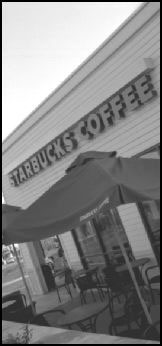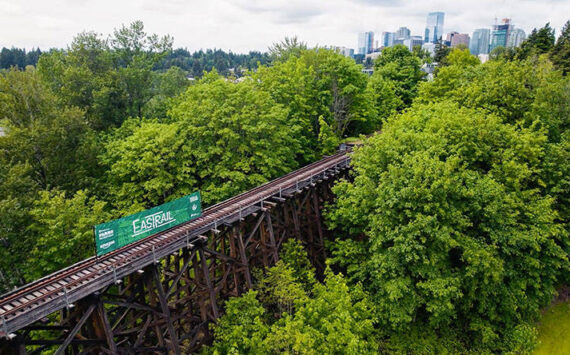WHEN I WAS A KID, before I discovered theater and girls, a friendly amateur radio operator (a “ham”) took me under his wing, helped me learn Morse code, and introduced me to the joys of talking to people all over the world using a transmitter.
Fade quickly into adolescence, acting, and acne, and I could barely remember the dits and dahs—ham slang for dots and dashes—to tap out an SOS.
But those days return vividly when I speak with techie sophisticates who are building their own free community wireless networks, networks which, coincidentally, share some open radio frequencies with hams.
These networkers string their tin-can network—sans string but including some real cans—from apartment to storefront to rooftop for no better reason than because they can and because it’s cool. The fact that it’s useful, helps the public good by expanding free access, lets them meet their neighbors (“Hi, I’m running a free network”), and might even put the screws to cell companies and telco giants—these are but lagniappe.
Adam Shand, the organizer of a late June summit in Portland, Ore., of these network builders and advocates, thinks that the interest stems from it being a “fun geek problem.” As to the upshot of it all, he says, “No one’s quite sure yet; we don’t know what our ending goal is.”
Seattle finds itself with a growing group of enthusiasts led, as much as any group of this kind can be led, by Matt Westervelt under the rubric Seattle Wireless (www.seattlewireless.net). Matt and others have collected a few dozen geographically dispersed nodes in homes and places like Aurafice Cafe on Capitol Hill. They are nearing the point where they stitch these points into a sprawling, mostly seamless grid using cheap, off-the-shelf, and even homemade equipment.
The Seattle crew and dozens of similar networks around the world rely on IEEE 802.11b (or Wi-Fi), the industry standard for high-speed, low-power wireless. It doesn’t require a license to broadcast on the frequencies it uses in the 2.4 gigahertz band; Wi-Fi uses some of the thinly apportioned, unlicensed free public spectrum.
Wi-Fi runs at very low power due to FCC limits, but it can still span dozens to hundreds of feet indoors through walls and floors; the high frequency allows the radio waves to pass through. Outdoors, however, the distance expands dramatically. Twenty-mile line-of-sight tests using cheap equipment were successful, and I’ve heard of many working multiple-mile links.
The 802.11b protocol allows central access points (APs) to coordinate networks of machines or to connect multiple wired networks. Dozens of manufacturers make APs, as well as PC cards for laptops, PCI cards for desktops, USB and Ethernet adapters for older machines, and special modules for handhelds like the Handspring Visor.
With enough density of APs, you can build a seamless network allowing both indoor and outdoor use at speeds of megabits per second. You could walk around with a laptop streaming video off the Net with nary an interruption. (A Wall Street Journal story earlier this year followed someone doing just that around London.)
Most volunteers’ nodes have a high-speed DSL or cable modem connection to the Internet. The volunteers are engaging in anarchic enlightened self-interest: By freely sharing their bandwidth, they’re increasing the value and coverage of the entire network, making it more likely for others to join and share as well. (It warms my heart, reminding me strongly of the 1994-vintage barely commercial Internet.)
These volunteers typically also have the advantage of access to their own roofs and windows, where they mount cheap, sometimes homemade high-gain antennas that extend the range and sensitivity of a network.
This is where the free networkers believe they have an advantage over commercial services, such as MobileStar (www.mobilestar.com), Starbucks’ wireless networking partner (see “Wired But Wireless,” May 31). Commercial outfits would have to make their own, presumably fee-based arrangements to locate and service antennas and high-speed network connections.
It’s hard to call free wireless networking a movement, because the dozens of organizations and thousands of individuals involved are scattered around the globe. But a loose affiliation has started to develop, and the recent Portland summit furthered ties among builders from Seattle, Portland, and Vancouver, and those farther afield in New York and the Bay Area.
Some met privately one day to discuss creating an association and pooling resources, and the next day met in public to present several sessions on building antennas, creating network maps online, and the status of for-fee Wi-Fi (disclaimer: I was gently roped into presenting).
The interest is there; the nodes exist; the volunteers are working hard. These advocates and builders may not know why they’re on this bus, but they know how to drive it. The revolution may not be televised; it’s more probable that it will be wireless.
Loosely affiliated members of this group include:
BAWUG, primarily an educational group: www.bawug.org
Nocat, in Marin County north of San Francisco, some of the members of which also happen to work for technical publisher O’Reilly & Associates: nocat.net
PDXWireless and Personal Telco in Portland, which have merged their interests and meetings: www.personaltelco.net, www.pdxwireless.com
NYCWireless: www.nycwireless.net
BCWireless: www.bcwireless.net






